Occupational Safety Training in Headphone Manufacturing
99,000 ₫
Note: The above price is calculated for one person, the price may fluctuate depending on the number of trainees participating in the course and depending on market movements. For more accurate pricing support, please refer to the quotation table or contact our consulting staff directly.
Occupational safety is an important issue in headphone manufacturing factories and needs to be addressed promptly to ensure the health and safety of workers, and to enhance the reputation of businesses. The Occupational safety training course is one of the effective solutions to raise awareness about accident prevention for workers participating in headphone manufacturing.
Table of Contents
Toggle1. Overview of Headphones
a. What are headphones?
Headphones are an audio device worn on the head to deliver sound directly to the user’s ears. They are typically connected to playback devices such as computers, mobile phones, or music players to provide high-quality sound and a better audio experience.
Headphones can be categorized into various types, including in-ear headphones, over-ear headphones, on-ear headphones, wireless headphones, sports headphones, noise-cancelling headphones, and many others.

b. Machinery used in headphone production
Common machinery and equipment used in the production and assembly of headphones include:
- Cutting machines: to cut components such as cables, speaker diaphragms, jacks, etc.
- Packing machines: to pack components such as headphones, cables, boxes, instruction manuals, etc.
- Soldering machines: to solder headphone components such as speaker diaphragms and connecting wires.
- Press machines: to press components in headphones such as speaker diaphragms and ear pads.
- Printing machines: to print logos, texts, or images on headphone surfaces, cases, and packaging.
- Measuring devices: to check sound quality and electrical resistance of headphones.
All of these machines and equipment are operated by professional engineers and technicians during the production and assembly process.

c. Headphone manufacturing companies in Vietnam
Below are some well-known headphone brands on the market:
- Apple: Produces headphones such as AirPods and EarPods, highly rated for sound quality and design.
- Bose: Known for noise-cancelling headphones and one of the most popular audio brands.
- Sony: Offers high-quality headphones like WH-1000XM3, trusted by consumers.
- Sennheiser: A professional audio brand producing headphones with excellent sound quality.
- JBL: Affordable headphones with good sound quality.
- AKG: Owned by Samsung, known for high-quality audio headphones.
- Beats by Dr. Dre: Famous for stylish design and high-quality sound.
- Audio-Technica: Produces headphones with good sound quality and reasonable prices.
- Shure: A professional brand producing headphones with outstanding audio quality.
- Philips: Popular for affordable headphones with good sound quality.
d. Specific jobs in a headphone manufacturing factory
Group 1
- Executive Director, Deputy Executive Director, and Department Heads in the headphone manufacturing factory.
Group 2
- Safety officers: manage safety within the factory, design safety procedures, supervise and ensure employees follow safe work practices.
Group 3
- Component production: includes metal processing, milling, turning, plastic cutting, plastic molding, 3D printing, wire cutting, electronic component assembly, etc.
- Assembly: workers assemble components into a complete product, including installing electronic circuits, headphone casings, tempered glass, keyboards, etc.
- Quality inspection: after assembly, products are checked to ensure quality and user safety.
- Packing and transportation: after passing quality inspection, products are packed and shipped to retail stores or distributors.
Group 4
- Office work, services, sales, and marketing.
- Production management, quality management, human resources, material management, financial and accounting management.
- Research and development: some roles involve developing new products and technologies to improve quality and meet consumer needs.

2. Overview of occupational safety training for headphone production
This article focuses on Group 3 because Group 3 directly participates in production and faces the highest occupational safety risks. For other groups, see here.
a. What is Group 3 occupational safety training?
- Group 3 occupational safety training consists of courses that equip workers with awareness of how to prevent workplace accidents.
- The training helps workers recognize and avoid hazards, reducing the risk of accidents during work.
REGISTER FOR OCCUPATIONAL SAFETY TRAINING SERVICE
b. Training duration
Initial safety training
- Total training duration is at least 24 hours, including exam time.
- 8 hours of theory on occupational safety and hygiene policies and laws
- 8 hours of theory on basic occupational safety and hygiene knowledge
- 4 hours of theory on specialized training content
- 2 hours of practical exercises on specialized training content
- 2 hours of theoretical examination at the end of the course
Training centers schedule sessions depending on workers’ availability. Typically, 6 sessions over 3 days, if the factory arranges continuous learning hours.
Periodic safety training
- Before the occupational safety card expires, workers seeking renewal must complete periodic occupational safety training with training hours equal to at least 50% of the initial training duration.
Explanation: total periodic training time is at least 12 hours, including exam time. After completing the course and passing the test, the occupational safety card will be renewed.
c. Training content
| No. | TRAINING CONTENT | TRAINING HOURS | |||
| Total | Including | ||||
| Theory | Practice | Exam | |||
| I | Occupational safety and hygiene policies and laws | 8 | 8 | 0 | 0 |
| 1 | Overview of the legal documents system on occupational safety and hygiene. | 6 | 6 | ||
| 2 | System of standards and technical regulations on occupational safety and hygiene. | 1 | 1 | ||
| 3 | Specific regulations of state management agencies on occupational safety when constructing, expanding, or renovating facilities, and inspecting machines, equipment, materials, and substances with strict safety requirements. | 1 | 1 | ||
| II | Basic knowledge of occupational safety and hygiene | 8 | 8 | 0 | 0 |
| 1 | Basic knowledge of hazards and harmful factors in the workplace. | 4 | 4 | ||
| 2 | Methods to improve working conditions. | 1 | 1 | ||
| 3 | Safety culture in production and business. | 1 | 1 | ||
| 4 | Rights and obligations of employers and employees; safety policies and regimes; functions and duties of safety officers. | 1 | 1 | ||
| 5 | Safety rules, signage, instructions, use of safety equipment and personal protective equipment; first aid, accident prevention, and occupational disease prevention skills. | 1 | 1 | ||
| III | Specialized training content | 6 | 4 | 2 | 0 |
| Comprehensive knowledge of machines, equipment, and hazardous substances; risk analysis, evaluation, and management; safe working procedures with machines, equipment, and hazardous substances. | 6 | 4 | 2 | ||
| IV | End-of-course safety assessment | 2 | 2 | 0 | 0 |
| Total | 24 | 22 | 2 | ||
See more training content of the 6 groups
d. Occupational safety card
After completing occupational safety training and passing the assessment, workers will be issued an occupational safety card (commonly called Group 3 safety certificate).
The Group 3 safety card displays information such as full name, date of birth, job, and specific working environment, along with training duration, red stamp, and signature confirming course completion.
According to Clause 2 of Article 24, Decree 44/2016/ND-CP, there are two cases:
- If the employer and employee have a labor contract, the employer must sign, stamp, and seal the safety card for Group 3 workers after completing training from a certified occupational safety unit and passing the assessment.
- If the worker is freelance or temporary, without a labor contract, the training unit must sign, stamp, and seal the safety card after the worker completes training and passes the assessment.

3. Identifying Hazards Affecting Workers in Headphone Manufacturing
During the headphone manufacturing process, hazards that may affect workers’ health include:
- Noise: Workers in headphone manufacturing factories may have to work in noisy environments, especially when operating large machinery. Noise can cause hearing problems and induce stress for workers.
- Dust and chemicals: In headphone manufacturing factories, workers may be exposed to dust particles and hazardous chemicals such as adhesives, dyes, and softening agents. These substances can cause skin, eye, and respiratory irritation, leading to serious health issues.
- Temperature and humidity: Headphone manufacturing factories may have hot and humid working environments, especially during production and the operation of large machinery. Working in these conditions can cause fatigue and reduce workers’ productivity.
- Occupational accidents: During headphone manufacturing, workers may encounter accidents such as cuts, punctures, or crushing injuries while operating machinery.
- Electrical hazards: If electrical equipment in the factory is not regularly maintained, not properly insulated, or waterproofed, it can pose a risk of electric shock to workers during production.
4. Common Types of Occupational Accidents in Headphone Manufacturing
Common occupational accidents in headphone manufacturing include:
- Electrical short-circuit accidents: Working with electronic components can cause electrical shorts if proper safety measures are not followed.
- Collision accidents: Employees in headphone factories may get injured from collisions with machinery, equipment, or other workers.
- Slip and fall accidents: Employees may slip or fall while moving around or operating equipment, leading to injuries.
- Cutting and puncture accidents: Tasks such as cutting, drilling, or nailing during headphone manufacturing can pose hazards to employees.
- Eye-related accidents: Workers need to work with bright lights, machinery, and small components, which may cause eye strain, headaches, and other vision-related issues.
- Exposure-related accidents: Certain materials in headphone manufacturing can negatively impact workers’ health, including respiratory issues, unpleasant odors, skin irritation, and other health problems.

5. Safety Measures for Headphone Manufacturing
To ensure worker safety during headphone production, the following measures can be implemented:
- Provide personal protective equipment such as safety goggles, masks, long sleeves, gloves, safety shoes, etc.
- Maintain workplace hygiene, keeping it clean, ventilated, and minimizing dust and noise.
- Train workers on occupational safety, especially regarding the proper use of machinery, equipment, and materials to reduce the risk of accidents.
- Follow safety regulations such as wearing safety harnesses when working at heights or near dangerous machinery.
- Regularly inspect and maintain equipment and machinery to ensure safety and prevent unexpected incidents.
- Implement fire prevention and emergency response plans, including evacuation and rescue procedures.
- Ensure that products meet safety and quality standards before reaching the market.
- Periodically conduct workplace environment monitoring in factories, collecting and analyzing harmful factors to adjust and reduce hazards, preventing occupational diseases.
6. Benefits of Occupational Safety Training for Headphone Manufacturing
An Toan Nam Viet provides businesses with the following benefits upon completing occupational safety training courses as regulated by Decree 44/2016/ND-CP on labor safety and hygiene:
- Workers can identify potential occupational hazards and take preventive measures to avoid accidents.
- Businesses can establish risk prevention measures in production, operation, and maintenance processes.
- Reduce costs associated with safety incidents at work.
- Uninterrupted production increases labor productivity and product quality.
- Ensure compliance with labor safety laws, minimizing legal risks.
- Enhance credibility and professionalism, boosting the business’s brand value.
Nam Viet’s training courses are designed to protect individuals from external hazards, helping them avoid injuries or, in severe cases, fatal accidents.
REGISTER FOR OCCUPATIONAL SAFETY TRAINING
7. Customer Feedback After Completing Occupational Safety Training for Headphone Manufacturing
An Toan Nam Viet has years of experience accompanying numerous businesses across Vietnam, particularly in the southern provinces. This responsibility is highly valuable, which is why our occupational safety training is increasingly professional. Our growth is driven by positive feedback and constructive suggestions from our clients. Below are testimonials from partners we have served.
Hoa Dat Construction and Trading Joint Stock Company
“Nam Viet’s service greatly simplified occupational safety and the completion of safety documentation for our work. The consulting team was enthusiastic and timely in answering our questions. Five stars for Nam Viet.”
See more customer interviews after using our services from An Toan Nam Viet
8. An Toan Nam Viet’s Occupational Safety Training Capabilities
An Toan Nam Viet is a leading and reputable occupational safety training center in Vietnam. Training sessions are continuously conducted at manufacturing workshops, factories, or construction sites across all 63 provinces in Vietnam.
REGISTER FOR OCCUPATIONAL SAFETY TRAINING
Occupational Safety Training License
- An Toan Nam Viet has been inspected and certified by the Labor Safety Department of the Ministry of Labor – Invalids and Social Affairs, certifying our qualification to conduct occupational safety and hygiene training. This further strengthens our occupational safety training capabilities.

Training Materials and Lectures
- Before being used in safety training courses, materials are reviewed to ensure accurate knowledge and effective application.
- Instructors follow standardized teaching methods from An Toan Nam Viet, developed by experts in occupational safety and hygiene training to maximize knowledge retention for learners.
Facilities
- Controlling classroom factors enhances teaching efficiency and learner knowledge retention.
- Our training facilities feature spacious classrooms meeting standards for area, lighting, and training equipment.
9. Nationwide Reputable Occupational Safety Training Center
At An Toan Nam Viet, we prioritize professional dedication in occupational safety training. For us, imparting self-protection knowledge to workers contributes to building a safer workforce for the country.
To ensure effective training, we meticulously prepare every detail, from tools and teaching equipment to curriculum, materials, sound, and lighting.
Our instructors are experts with extensive experience in the field, with research on identifying hazards across various industries and methods to prevent them.
Lessons are practical, vivid, and easily understandable, allowing workers to learn comfortably and retain knowledge effectively. All teachings strictly follow Decree 44/2016/ND-CP.
Workers gain knowledge on hazard prevention and self-protection, applying it appropriately in real work scenarios.
Our training center prides itself on being a reputable, professional provider of occupational safety training with advantages including:
- Competitive training costs while maintaining high quality.
- Flexible training schedules aligned with company operations.
- Fast and legally compliant procedures for issuing training certificates.
- Instructors with long-term experience in the field.
- Classroom factors controlled to enhance teaching efficiency and learner comprehension.
- Lessons tailored to occupational safety in businesses.
- Dedicated, professional support for customers, promptly and accurately.

10. Additional References for Occupational Safety Training in Headphone Manufacturing
- Occupational safety materials for headphone manufacturing
- Occupational safety training material set
- Occupational safety training test set
- Occupational safety training syllabus for headphone manufacturing
- Occupational safety multiple-choice test for headphone manufacturing
1 review for Occupational Safety Training in Headphone Manufacturing
No comments yet

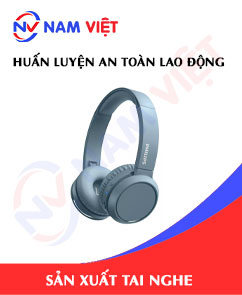
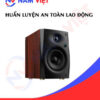
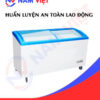




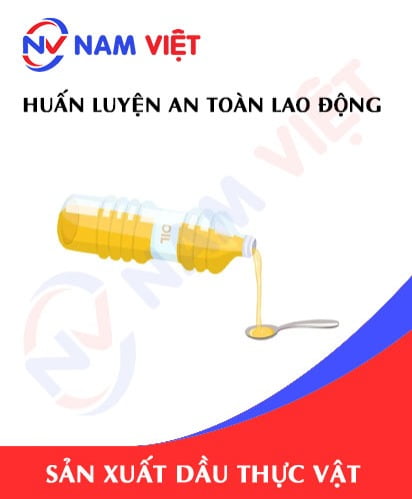





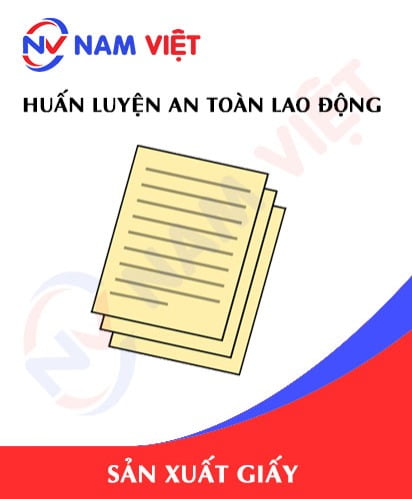
namchinh.haiphong341
Dịch vụ huấn luyện an toàn lao động rất tốt nhé, giảng viên dạy rất sinh động dễ hiểu!